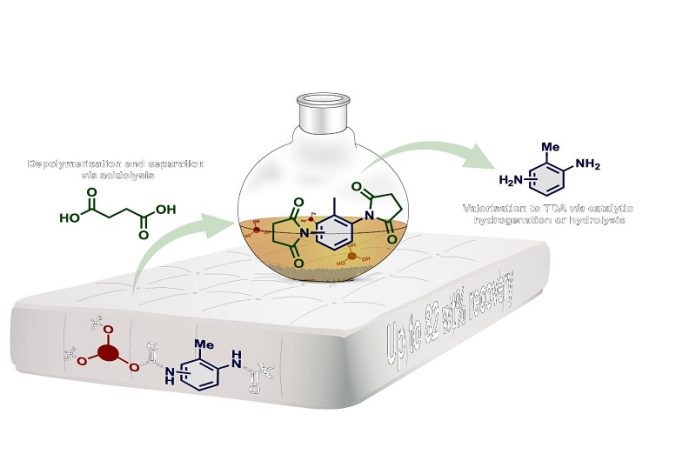
Researchers at Aarhus University have developed an innovative method to recycle polyurethane foam, a common material found in products like mattresses, insulation, and car parts.
This discovery is a major step forward for the recycling industry, which aims to recover and reuse the original components of polyurethane, making recycled products more affordable and sustainable.
Polyurethane, often referred to as PUR, is a versatile plastic used in a wide range of items, from mattresses and refrigerator insulation to car seats and wind turbine blades. Despite its many uses, PUR is a significant environmental concern.
Most of the discarded PUR products around the world end up being burned or dumped in landfills, which is problematic because the primary ingredients of PUR are derived from fossil fuels.
In 2022 alone, the global production of PUR reached nearly 26 million tons, and by 2030, it’s expected to grow to 31.3 million tons, with foam making up about 60% of this total.
A small but growing industry has emerged, focusing on chemically breaking down, or depolymerizing, PUR into its original components—polyol and isocyanate—with the goal of reusing these materials in new products.
However, this process is currently expensive and complicated, making it difficult for recycled materials to compete with new, “virgin” materials.
This is where the team from Aarhus University steps in with their clever solution. They’ve improved the existing process that companies use to break down PUR foam with acid, known as acidolysis.
The current method results in a mixture that can’t be directly recycled, requiring new formulas to be created by customers.
But the Aarhus team has figured out how to both break down the PUR foam and separate its components in a single step.
Their process involves heating flexible PUR foam to 220°C in a reactor with a small amount of succinic acid.
After heating, they use a filter to separate the two main components: polyols, which pass through the filter, and a solid part that’s transformed into a substance called diamine, used in the production of isocyanates.
The researchers’ method is highly effective, allowing them to recover up to 82% of the original material from flexible PUR foam.
The polyols they recover are of a quality comparable to new materials, meaning they can be reused to make new PUR products. The team has published their findings in the journal Green Chemistry.
Assistant Professor Steffan Kvist Kristensen, one of the study’s authors, sees huge potential in scaling up this method for use in factories that produce PUR foam. However, he notes that recycling PUR waste from consumers will require further development.
Challenges like waste sorting, logistics, and handling different types of PUR foam still need to be addressed before a truly circular economy can be established for polyurethane.
The researchers are now testing this new technology on other types of polyurethane materials and are working on ways to reuse the acid involved in the process.
Their ultimate goal is to create a fully sustainable method for recycling PUR, helping to reduce waste and reliance on fossil fuels.



